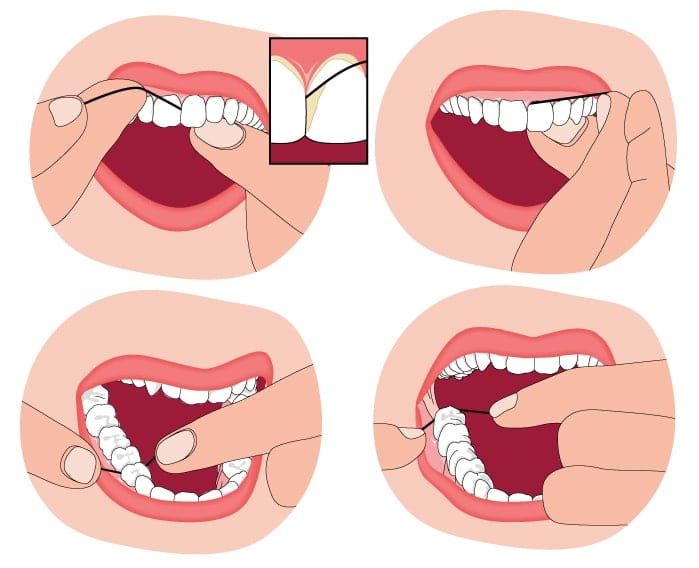Common Flossing Mistakes
When it comes to keeping your teeth and gums healthy, having a good daily dental routine is paramount. This routine should consist of brushing twice a day and flossing once a day. This is because brushing your teeth cleans about 60% of your tooth surfaces, while flossing leans the remaining 40%. Therefore, in order to thoroughly clean your teeth, both activities are necessary. While brushing your teeth is more straightforward, many people struggle with flossing. In fact, dentists often notice their patients making these common flossing mistakes:
Not Flossing
One of the most common mistakes dentists notice their patients making is simply not flossing regularly. Even if you floss right before your dental appointment, your dentist can still tell whether or not you floss on a regular basis. Many people forget to floss or they simply skip it. Unfortunately, this allows plaque to accumulate in between the teeth and along the gum line. This can increase your chances of developing tooth decay and gum disease.
Missing Places
Another common mistake dentists often notice is that their patients tend to miss certain areas when they floss. One extremely common area that is often missed is the far side of the last molars. Other missed places are along the sides of teeth and along the gum line.

Flossing Too Hard
If your gums regularly bleed or hurt while you floss, then you may be flossing too hard. When you floss, the dental floss should never actually come in contact with the gums. Instead it should be gently moved around each tooth and along the gum line. Snapping the floss into the gum tissue can cause the gums to become inflamed, which can cause them to recede. Unfortunately, flossing too hard can actually increase the risk of gum disease since it causes gum recession.
Flossing Too Much
Although this is not a common mistake that most people make, it is possible to floss too much. As mentioned above, the gum tissue can become easily inflamed. Flossing too much can cause this inflammation and increase the risk of gum disease. For this reason, it is recommended to only floss once a day.
Flossing at the Wrong Time
Since it is only recommended to floss once a day, knowing the best time to floss is necessary to get the most benefits from flossing. In fact, the best time to floss is just before you go to bed. This is because saliva production decreases while you sleep, which allows any remaining bacteria in your mouth to do more damage. Flossing helps remove plaque and minimizes the damage done to your teeth. Additionally, flossing before you brush allows the fluoride from your toothpaste to work its way between your teeth for more protection.
Using the Wrong Type of Floss
Contrary to popular belief, there is more than one type of dental floss. There are several different variations created for a wide range of dental needs. Spending some time researching the best type of floss for your smile can help make your flossing routine easier, faster, and much more effective.






